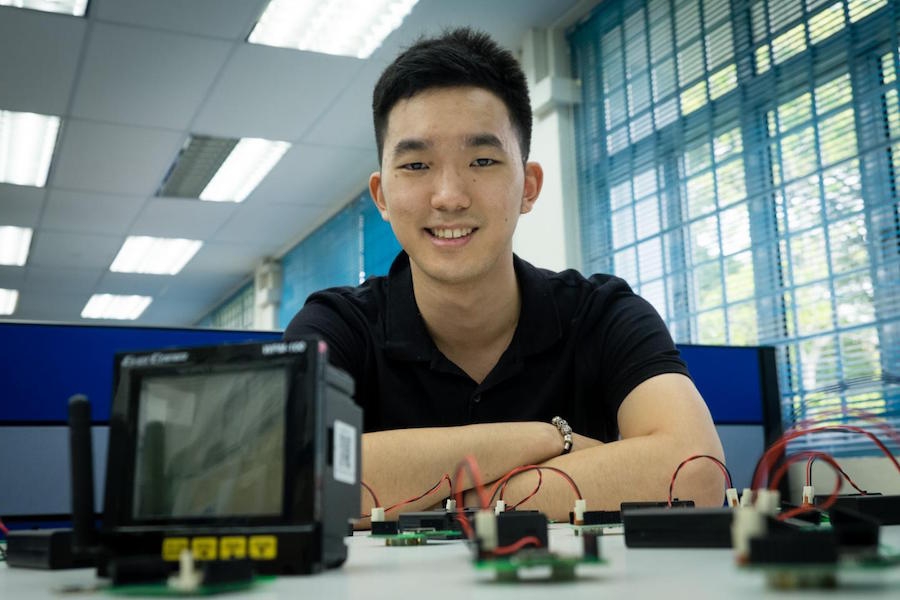
News
NTU Singapore taps computer chips to find energy savings
December 14, 2015 - A new algorithm from Nanyang Technological University, Singapore (NTU Singapore) is able to analyze energy consumption by tapping on sensors in computer chips already found in equipment such as PCs, servers, air-conditioning systems and industrial machinery, and could help end users cut their energy bills by as much as 10%.
December 14, 2015 By Anthony Capkun

“The new algorithm allows us to use the most cost-effective way to find out where we can save energy, and our performance can be guaranteed by using real-time data,” said Ted Chen. He is the co-founder and product architect of Evercomm Singapore, an NTU-incubated company who worked with NTU’s professor Wen Yonggang to commercialize (and license) the technology.
PHOTO: Ted Chen, with various sensor devices used by his company to enable companies to save more on energy. Photo courtesy NTU Singapore.
Computer chips are needed for a host of functions, such as measuring temperature, logging data traffic and monitoring the workload of computer processors. By combining them with external sensors—such as those that monitor ambient temperature—the new technology can integrate and analyze all the operational data and recommend energy-saving solutions with almost no upfront cost.
“By combining the software algorithm with hardware sensors, we can find out exactly how much cooling a room needs, whether there is an oversupply of cooling and so adjust the air flow and temperature to achieve the best balance,” said Chen.
“With NTU’s new analytic engine, large semi-conductor factories and campuses could save up to S$1 million a year without a need to change much of their hardware and, instead, tune their operation and time their energy usage,” added Chen.
“Servers which are performing intensive computing will generate a lot of heat,” said Wen. “If we know which of these servers are, we can spread out the computing load and so reduce the heat emitted by the servers, in turn reducing the energy needed to cool them.”
Print this page